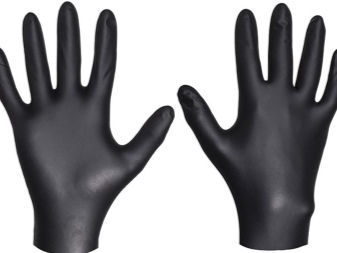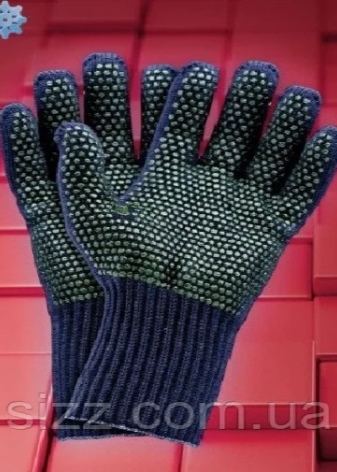Varieties of protective gloves and advice on how to choose them

Even at home, sometimes you have to work with dirty, hazardous substances and objects. Protection can be ensured with normal protective gloves. However, they are divided into a number of varieties, so it is necessary to take into account the advice on their choice given by professionals.


Degrees of protection
The manufacturing sector can pose a wide variety of threats to the hands. These are blows, and vibration loads, and punctures, and even deep cuts. But reliable protection is provided only if it meets Russian or international standards. Abrasion resistance according to EN 388 at level 1 is 100 cycles. The 4th level already implies resistance to 8000 abrasion cycles.
The tear resistance at the 1st level must be at least 10 Newtons. For certification for category 4, this indicator must reach a minimum of 75 Newtons. The cut resistance index will be 1.2 and 10, respectively. The ability to resist punctures in these cases is equal to 20 and 150 Newtons.
As you can see, the difference between products of different classes is very significant.

Materials (edit)
Knitted protective gloves are made from natural or synthetic yarn. Production in both cases takes place on modern automated equipment. The difference between specific types of knitted gloves is related to the following points:
- type of raw material;
- its grade;
- features of the weaving of threads;
- mating class.


When making anti-knock gloves for hands, thermoplastic rubber is most commonly used. This molded material guarantees optimal protection against a wide variety of mechanical factors. If the design is made correctly, the material was selected without errors, the dissipation of the impact energy occurs very efficiently. The latest technological solutions make it possible to protect a person from mechanical stress by 75–90%. The exact final figure depends on the mass of factors and nuances, which cannot be taken into account in advance.
Some models have additional protection, namely:
- from vibrations;
- from cuts and punctures;
- devices for better gripping of objects;
- cuffs that fix the position of the wrists.


But the story about the means of personal safety of a person will not be complete without mentioning thermal protective devices. Models designed to protect the hands from the electric arc are usually made of anti-static materials, meta-aramid and para-aramid fibers. Such products must be used without fail in a set with other overalls.
Some products use pure para-aramid fiber. This solution allows you to guarantee not only an excellent level of resistance to destructive influences, but also the ease of manipulation of external objects.
It is allowed to use such gloves for inserting into welding gloves in order to reduce the intensity of the thermal effect of the electric arc.


But for chefs, special metal gloves are needed. They should not have any synthetic coating - only the strong metal itself is important. The consequences of awkward movement with a knife, a culinary hammer or mistakes when handling an electric meat grinder can be extremely serious if the protective elements are not used. Chainmail chef's gloves are made using a special technology.Weaving is designed in such a way that it guarantees the greatest resistance to harmful influences, and at the same time does not interfere with cooks from fulfilling their duties.
Of course, great attention is paid to sanitary safety. The main material that fully meets the basic requirements is stainless steel.
But you have to select it carefully, so purchases should be made only from official, trusted suppliers.


Chemically resistant gloves, essential in many industries, are most often made on the basis of nitrile. Acid protective devices can protect not only from acids, but also from alkalis, from a number of corrosive salts. The selection of PPE, however, must be strictly individual. Gloves made from different materials may be required not only in different industries, but also in different areas of the same enterprise. Windproof and cold insulating gloves are used for outdoor work.
There are options such as:
- pure jersey;
- PVC coated knitwear;
- latex coated knitted base;
- nitrile coated cotton.


Marking
The variety of properties of protective gloves has made it very important to develop uniform designations for their properties. In our country, such marks are accepted as:
- Мп - less risk of puncture and incision;
- Тн - for work in the cold;
- Кк - calculation for contact with concentrated acids;
- PM - large fraction soap;
- PC - dust of a small fraction;
- Ti - resistance to infrared radiation;
- Yat - contact with solid toxins;
- Yazh - contact with liquid toxins;
- Shchr - isolation from dilute alkalis and aggressive alkaline solutions;
- Нс - for working with oil and oil products;
- Ps - for interaction with asbestos, glass wool, and so on.

There may also be such markings as:
- Tr - splashes of molten metal;
- Mi - abrasion;
- MV - high vibration level;
- Рз - resistance to radioactive particles;
- En - for low voltage current;
- Ev - for work with high voltage;
- NJ - vegetable oils and fats.


Popular models
If you need to work with very hot bearings and similar parts, it is often recommended to use SKF TMBA G11ET... This model guarantees heat resistance up to +500 degrees. The designers have also taken care of excellent resistance to ignition, which is important in the transport industry, in car repairs and in the petrochemical industry. Kevlar parts allow you to avoid the risk of puncture or cut. Compliance with EN 388, EN 407 standards is guaranteed.
Choosing oil resistant gloves, you can pay attention to TMBA G11H. The Kevlar product does not melt or burn. The greatest resistance to heat is +250 degrees. In a hot liquid (such as an oil bath), gloves can withstand heating up to +120 degrees. The pile is missing.
The following gloves are widely used for construction and repair work:
- G304;
- Archimedes Norma 91899;
- M8 Bison Master 11276-M;
- Bison 11275-L Master (retain the sensitivity of the fingers);
- Sibrtech (especially good for handling slippery objects).

Selection Tips
If savings are especially important, and the protective properties can be minimal (as in everyday life), then you can use simple knitted gloves. Purely natural raw materials are guaranteed to exclude allergic reactions. However, synthetic fibers are almost always added to improve performance. Nylon products combine lightness and strength with excellent handling. The outer surface is often coated with a polymer or nylon layer.
In the winter months, of course, the insulation of products is of great importance. Insulation can be fur, wool, semi-wool and even non-woven fabric. Increasing its thickness allows you to work in severe frost, but such work cannot be called convenient.
Nitrile, neoprene and latex practically lose their protective properties at low temperatures. Blended fabrics perform much better.


It is worth paying attention to the following recommendations:
- size and markings;
- fire resistance class;
- resistance to convective heat;
- critical mass of molten metal (guaranteed burning material);
- resistance of gloves to radiation, first of all, according to the material of the filler;
- difference in resistance to convective and contact cold;
- accuracy class of work to be performed.













The comment was sent successfully.